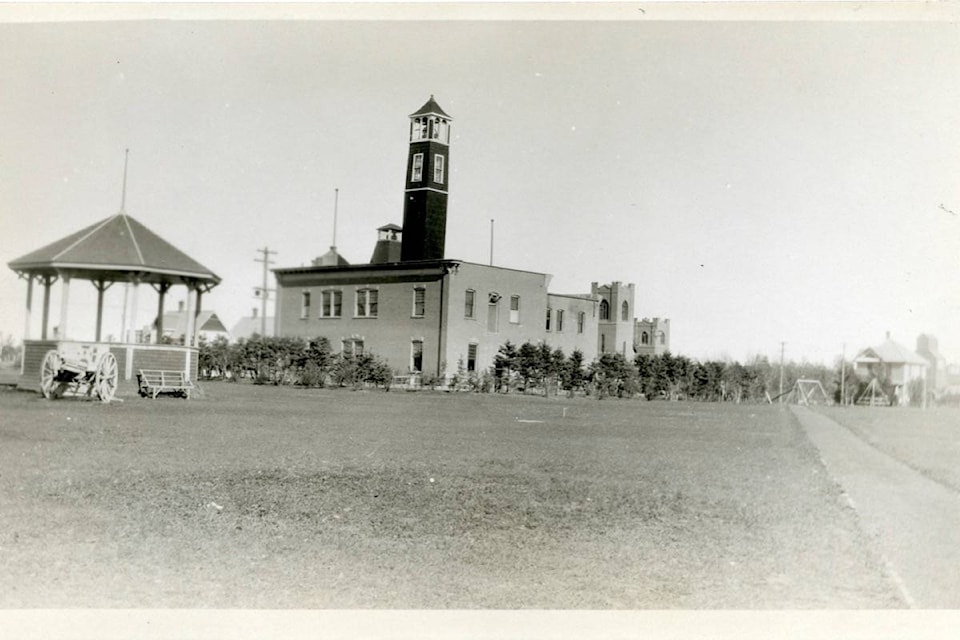There has been a lot of discussion about the impact the COVID-19 virus pandemic is having on the economy.
There have already been personal and business bankruptcies. Unfortunately, most experts predict that those numbers will grow rapidly in the coming months.
There are also questions about what impact soaring expenditures and plunging revenues might have on governments.
It is often forgotten that on April 1, 1936, the Alberta government defaulted on its bonds, thereby becoming technically bankrupt. It was the first time in Canadian history that a provincial government defaulted on its debts.
The federal government had to provide a special bailout.
Many years before that, during the First World War, the City of Red Deer also became technically bankrupt in 1917. The city’s bank refused to grant it any more credit, and the city missed some of its debt payments.
That crisis was temporarily resolved when the city managed to find a new bank willing to handle its accounts, albeit with a strict overdraft limit. The provincial government also helped out by assisting with the sale of some city treasury bills to help cover expenses.
The roots of these severe problems went back to 1913, the year that Red Deer was incorporated as a city. The great real estate boom that accompanied the massive wave of settlement of the Canadian West, collapsed.
People found themselves unable or unwilling to pay property taxes on lots, which they had purchased for investments at inflated, speculative prices.
The city quickly found itself in a critical position. Revenues plunged, but the high debt payments incurred in the boom years remained.
Tax sales provided virtually no relief. No one was willing to risk new money in a collapsing real estate market. The situation was made even worse with the outbreak of the First World War in August 1914.
Drastic measures were introduced. Many city employees were laid off. The salaries of the remaining staff were cut by as much as 40 per cent.
Still, revenues continued to drop faster than cuts in expenditures. In 1916, only one-third of the current year’s taxes were collected.
Hence, the city became technically insolvent for a while in 1917. Unfortunately, while the provincially authorized treasury bills offered short-term relief, there was a fatal flaw to the plan.
The treasury bills were secured by the amount of the city’s tax arrears. The idea was that conditions would return to normal after the war and land values would escalate again. That didn’t happen.
Instead, the economy went into a further state of collapse after the end of the war in November 1918. City council raised the property tax rates.
Business taxes were hiked to 20 per cent from 12 per cent. All city grants were eliminated, except the one to the public library.
City councillors and school trustees made personal door-to-door canvasses to collect delinquent taxes.
Despite the new desperate measures, revenues continued to plunge. The amount of tax arrears and the city overdraft at the bank continued to soar. Attempts to sell more treasury bills failed. The city was once again technically bankrupt. At one point, it struggled to meet payroll.
In the fall of 1922, the Red Deer hospital also went bankrupt. For obvious reasons, the City of Red Deer was unable to bail the hospital out.
Beds were closed, salaries were slashed and large numbers of staff were laid off. The results failed to bring back solvency.
The provincial government had to step in and take temporary control until longer-term solutions could be found.
A slight improvement in the economy in 1923 eased the situation slightly. The city was able to fully meet its payroll again.
The city adopted a strict pay as you go policy on any expenditures, mainly out of necessity, as the city’s credit rating was so poor.
A longer-term solution came in April 1926, when the city took over ownership of the local electrical utility.
The revenues from the utilities allowed the city to pay down debts and then to start reducing taxes. The lower taxes helped spur growth in the local economy. After 10 very challenging years, Red Deer was finally on the road to real recovery.
Historian Michael Dawe’s column appears every Wednesday.
